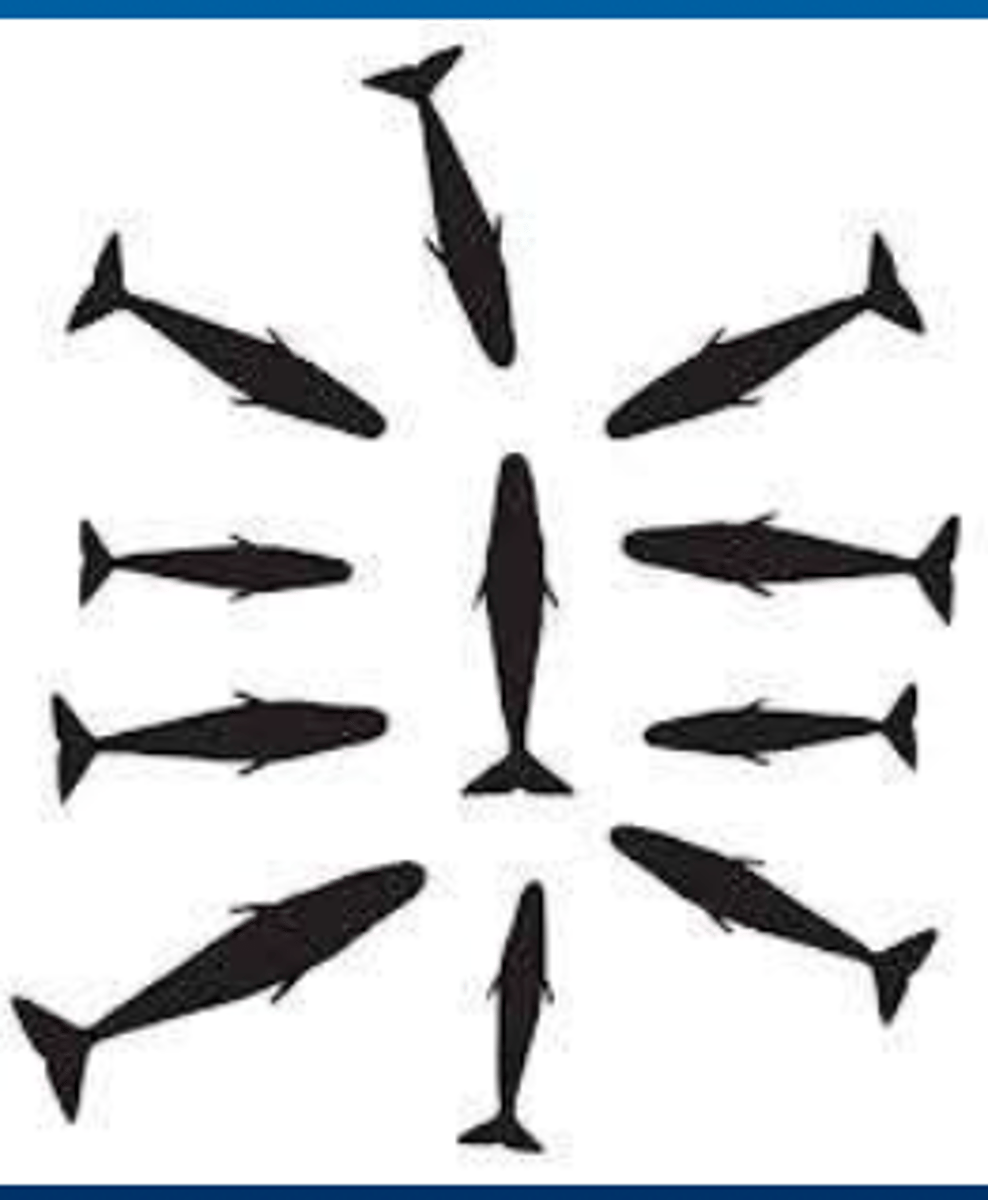Chapter 12: Ecology of Group Living and Social Behaviour
1/19
There's no tags or description
Looks like no tags are added yet.
Name | Mastery | Learn | Test | Matching | Spaced |
|---|
No study sessions yet.
20 Terms
3 main ecological factors for evolution of social behavior
➢Where they give birth - e.g. seal colonies
➢Where they forage - e.g. deep sea / sperm whales: baby sitting
➢What they eat - abundant food (e.g. Fin whales that feed on euphasiid prey)
Benefits of living in groups
Predation risk
➢Individual avoidance at sea
-> Elephant seals avoid Killer whales by diving deep
-> Nearshore dolphins, Baleen whales hide in river mouths or surf zones or kelp beds Pigmy & Dwarf sperm whale - reddish cloud to confuse predator
➢most important factor to build groups
Dilute predation risks for individuals, e.g. mixed dolphin groups Warning / alert others / defend against predators (e.g. sperm whales "Margarite formation")
➢Non-socially transmitted parasites: Dilution effect (cookie cutter sharks)
➢Cooperative feeding (Killer whales, Humpback whales, Dolphins cooperate with fishermen ...)
➢Environmental factors (keep warm, protection ...)

Forced aggregations
When resources are clumped- individuals do not necessarily benefit from each other's company!
Examples:
-> Belugas gather in warm tidal creeks during annual moult or Pinnipeds are forced together on small haul-out places
Costs/risks of living in groups
➢Risk of transmitting parasites socially (e.g. Bacteria infections, parasite fish)
➢Competition for limited resources (share food, haul-out places, mates..)
Natal Philopatry
Returning to birth place, extreme in pinnipeds - territory of male northern fur seals rarely shift more than 10m!
Sexually dimorphic philopatry
To avoid inbreeding (e.g. Sperm whales - male dispersion)
Philopatry
The behaviour of remaining in, or returning to, an individual's birthplace
-> But most aquatic marine mammals have huge home ranges that overlap many conspecifics: Differs between geographic and social philopatry
➢Some geographic but not social philopatry:
Bottlenose dolphins remain in their natal home range but rarely interact with their maternal relatives ➢Both geographic & social philopatry:
Killer whales - no dispersion of either sex, they interact with their relatives throughout their life – but mate outside their kin group
Affiliative behavior
Friendly
➢Strengthen bonds
➢Mend damaged bonds
➢Reduce tension
➢Need service from another
e.g. grooming
Affiliative behavior in dolphins/sperm whales
➢Rub body parts, mutual stroking, fin touching, 'greeting
ceremonies' in killer whales, synchrony
➢But also skin / parasite removing
Aggresion, agonistic displays and dominance
➢Growling, open mouth, head jerking, lunching, charging another
➢Sounds: 'pop' sounds dolphins, growls in seals
➢'Toothrake' marks from fights (male beaked whales, narwhal 3m tusk (but
mostly sensory organ), elephant seals)
➢Headbutting (bottlenose whales, pilot whales)
➢ But most not lethal, except infanticide / killing of Harbour porpoises by Bottlenose Dolphins ➢Agonistic interaction not necessarily aggressive
Non-receptive sexual behavior
➢Common in marine mammals: fur seals, baleen whales, toothed whales, manatees .. For communication, relationships, bonding ...
➢Dolphin – Bonobos
role dominance or affiliative behaviour / greeting, forming social bonds, conflict resolution and post-conflict reconciliation -> Alliances in male Bottlenose dolphins – dominance / affiliative
➢‘Test the social bonds’
➢Immature animals ‘play or practice of herding others ́
Matriarchal groups
Female leader in a group with group members are relatives and no-relatives
Matrilineal groups
Offspring line from one female, several matrilines can be in a group, that are either related (sister groups e.g. Killer whales, Pilot whales) or not (e.g. Sperm whales & Elephants)
Matrifocal / matrilineal groups
One matriline with a female and her offspring, no offspring dispersal by neither gender: Bisexual philopatry - Killer whales (single matrilines) & Pilot whales (multilevel matrilines)
Sperm whale bonding strategies
Females: Matrilineal (ca 10 individuals) stable groups in tropical areas but can split after 5-10 years (not all females are related)
Cooperative offspring care, babysitting, communal feeding (allomothering)
Males: Bachelor groups/ old males solitary
– migrate away from females to higher latitudes to feed
- Mature later than females (delay breeding to become larger to compete with others)
– rove alone around females, (but bonds among younger males possible)
Bottlenose dolphins and bottlenose whales bonding strategies
Roving male alliances, weaker female-female bonds
➢Fission-fusion societies (change in size and composition)
➢Male-male bonds can last for lifetime
➢Male alliances work alone or with other alliances to capture females
➢As strong as mother/offspring bonds
➢Social female bonds – looser network among several females
Bisexual bonds in killer and pilot whales
➢Matrifocal units (Killer whales: 2-9 individuals, 1-4 generations mother & offspringPilot whales: 60-200 animals, multi-level sister groups)
➢Natal philopatry of both gender
➢Bonds between mothers & sons strong!
➢Bonds between brothers - scouting/mating ➢Bonds between sisters/mother - offspring care
Adoption of non related animals
➢Killer whales accept non-related animals, even feed them when ill or incapable. Special case in Norway an adopted orphaned handicapped female born 1995 seen with > 5 different groups
➢Crippled Bottlenose dolphin was seen with sperm whales
➢Iceland 2023: Killer whales raised a long-finned pilot whale calf - adoption or abducted?
Bonding strategies
➢Females bear cost of parental care!
➢Female reproductive and bonding strategies determined by access to food and safety from predators (some cases males: infanticide)
➢Female philopatry (non social factors such as resource
distribution and prey behaviour or social factors such as cooperative defense of offspring or resources)
➢Bisexual philopatry due to low cost of locomotion - large home & feeding ranges in which they encounter other non related mates, e.g. killer whales and pilot whales
➢Cetacean offspring are followers, not tied to a breeding site!
Male mating and bonding
Determined by distribution of femalesbut also presence of predators:
Bottlenose dolphins in Scotland don't form alliances, shark predation is low compared to Australia, where they form alliances